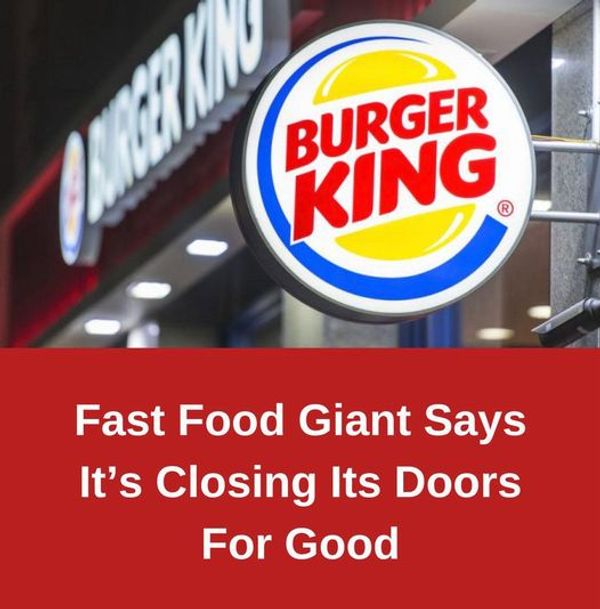
Burger King, the well-known fast-food giant, has recently made a bold decision to close a significant number of its U.S. restaurants. This move reflects internal and external factors that have led the company to reevaluate its operations. By taking a closer look at this decision and Burger King’s broader efforts to redefine its brand, it becomes clear that the company is embarking on a transformative journey within the competitive realm of fast food.
The decision to close restaurants is not new for Burger King. The CEO, Joshua Kobza, has acknowledged that the company has always closed a certain number of restaurants annually to ensure optimal performance. However, the announcement to shutter approximately 400 U.S. locations signifies a more calculated and substantial move.
Chairman Patrick Doyle has also stated that franchisees who are unwilling or unable to consistently operate above the system average will be phased out. This commitment to maintaining a high standard of operations allows Burger King to redirect its resources and efforts towards bolstering its more profitable establishments, thus enhancing overall performance and brand image.
These closures are part of Burger King’s broader strategy of redefining its brand and fortifying its position in the competitive fast-food arena. To achieve this, the company introduced the ambitious “Reclaim the Flame” rebranding campaign in 2022, with investments totaling $400 million. This comprehensive strategy includes reimagined advertising campaigns, streamlined menu offerings, and comprehensive restaurant renovations, all aimed at rejuvenating the brand’s appeal.
Burger King is also committed to modernizing its restaurants. It plans to invest $50 million over the next two years to revamp nearly 3,000 locations. These modernizations will include technological enhancements, kitchen upgrades, and physical renovations designed to enhance the overall customer experience. Innovations such as three-lane drive-thrus and advanced delivery mechanisms cater to contemporary consumer preferences, ensuring that Burger King remains relevant and competitive in the fast-food industry.
Burger King’s transformation is happening amidst challenges both internal and external. The company faced setbacks in digitalization during the pandemic, hindering its ability to effectively cater to the surging demand for online orders and deliveries. Additionally, the launch of experimental menu items, like the Impossible Burger, presented challenges that required careful navigation.
Despite these challenges, recent indicators suggest that Burger King’s strategic endeavors are paying off. Despite the closures, the company reported an impressive 8.7% surge in comparable sales in the first quarter of 2023. This upward trajectory demonstrates the potential efficacy of the brand’s streamlined offerings, rebranding initiatives, and the targeted closure of underperforming outlets.
As Burger King competes with fast-food giants like McDonald’s, Wendy’s, and emerging contenders like Five Guys and Shake Shack, its strategic efforts take on added significance. By orchestrating a holistic transformation that involves overhauling its brand image, refining its menu, and creating immersive dining experiences, Burger King is positioning itself to recapture lost market share and redefine its place in the fast-food landscape.
In conclusion, Burger King’s decision to close a substantial number of its restaurants signifies more than just an operational adjustment. It’s a deliberate step towards redefining the brand, optimizing operations, and enhancing customer experiences. This transformative move comes at a crucial juncture as the fast-food industry continues to evolve in response to changing consumer preferences. With its rebranding initiatives, modernization investments, and strategic closures, Burger King is setting the stage for a dynamic resurgence that could reshape its competitive standing and redefine industry standards.



